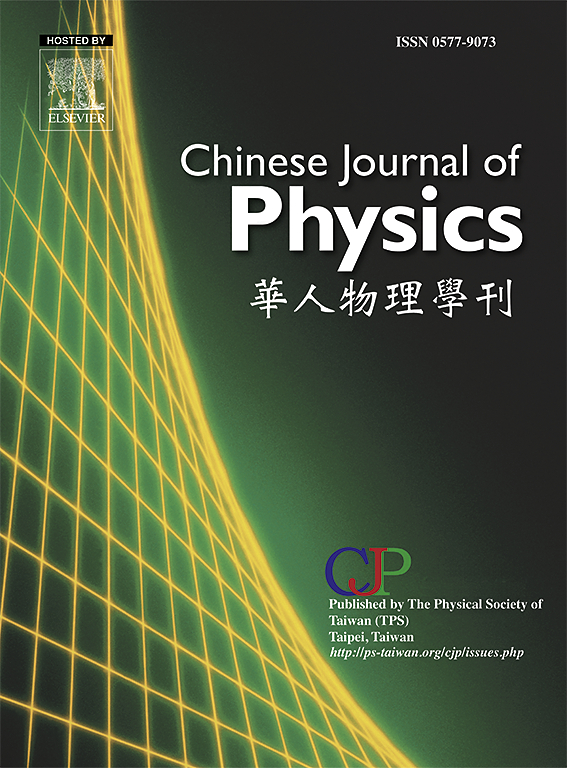Genocchi operational matrix of the differentiation method for phase change process with size-dependent thermal conductivity and mass diffusivity
IF 4.6
2区 物理与天体物理
Q1 PHYSICS, MULTIDISCIPLINARY
引用次数: 0
Abstract
The study of variable heat conductivity shows significant contribution in the fields of heat and mass transfer. When phase-change materials (PCMs) experience a temperature difference, they change their original state. This causes a change in thermal conductivity at each instant. In connection with this, the study of a phase change sublimation that accounts for size-dependent thermal conductivity and mass diffusivity is essential to optimizing the sublimation rate, which is still absent and being considered in this work. Modeling accounts for internal heat generation as a function of space and time. A time-dependent flux-type heat source drives sublimation. The Genocchi operational matrix of differentiation method is employed successfully to obtain the numerical results and verified with finite-difference method in the case of full model. The condition for the limitation of the sublimation is derived in the case of full model, and shown that sublimation can take place within the region under the sublimation curve. It is found that with an internal heat source, a greater rate of sublimation is achieved. Moreover, a sublimation model that accounts for fixed heat conductivity, convection, and an internal heat source has a faster sublimation rate than a sublimation model with size-dependent thermal conductivity and the standard sublimation model.

热导率和质量扩散率随尺寸变化的相变过程的微分方法的Genocchi运算矩阵
变导热系数的研究在传热传质领域有重要的贡献。当相变材料(PCMs)经历温差时,它们会改变其原始状态。这导致在每一个瞬间的热导率的变化。与此相关,考虑尺寸相关的导热系数和质量扩散率的相变升华研究对于优化升华率至关重要,这在本工作中仍然是缺乏和正在考虑的。模型将内部产生的热量作为空间和时间的函数来考虑。随时间变化的流体型热源驱动升华。利用微分法的Genocchi操作矩阵成功地得到了数值结果,并在全模型情况下用有限差分法进行了验证。导出了在全模型情况下升华的限制条件,并证明了升华可以在升华曲线下的区域内发生。结果发现,采用内部热源时,升华率更高。此外,考虑固定热导率、对流和内部热源的升华模型比具有大小相关热导率的升华模型和标准升华模型具有更快的升华速率。
本文章由计算机程序翻译,如有差异,请以英文原文为准。
求助全文
约1分钟内获得全文
求助全文
来源期刊

Chinese Journal of Physics
物理-物理:综合
CiteScore
8.50
自引率
10.00%
发文量
361
审稿时长
44 days
期刊介绍:
The Chinese Journal of Physics publishes important advances in various branches in physics, including statistical and biophysical physics, condensed matter physics, atomic/molecular physics, optics, particle physics and nuclear physics.
The editors welcome manuscripts on:
-General Physics: Statistical and Quantum Mechanics, etc.-
Gravitation and Astrophysics-
Elementary Particles and Fields-
Nuclear Physics-
Atomic, Molecular, and Optical Physics-
Quantum Information and Quantum Computation-
Fluid Dynamics, Nonlinear Dynamics, Chaos, and Complex Networks-
Plasma and Beam Physics-
Condensed Matter: Structure, etc.-
Condensed Matter: Electronic Properties, etc.-
Polymer, Soft Matter, Biological, and Interdisciplinary Physics.
CJP publishes regular research papers, feature articles and review papers.
 求助内容:
求助内容: 应助结果提醒方式:
应助结果提醒方式:


